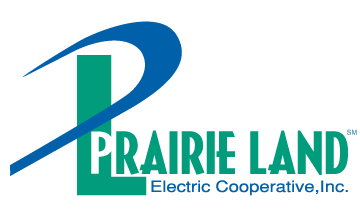This topic was featured in the March 2024 Kansas Country Living Centerspread.
As planting season nears, here are some agriculture-related facts from the American Farm Bureau Federation (AFBF):
- Each year, one U.S. farm feeds 166 people domestically and abroad. The global population is expected to increase by 2.2 billion by 2050. This means that the world’s farmers will have to grow approximately 70% more food than what they produce today.
- Two million farms dot America’s rural landscape, according to the AFBF, and 98% are operated by individuals, families and family-run partnerships or corporations.
- Eighty-six percent of U.S. agricultural products are produced on family farms or ranches.
- Americans throw away approximately 25% of the food they buy to eat at home.
- Women make up 36% of the total number of farm operators in the U.S.; 56% of all farms have at least one female decision-maker.
As farmers return to their fields this spring, Safe Electricity urges all workers to be alert to the dangers of working near overhead power lines. Follow these safety tips:
- Determine power line locations before going out into the fields and designate preplanned routes that avoid hazardous areas.
- Be aware of increased height when loading and transporting tractors on trailer beds. Be cognizant of tall antennas.
- Avoid raising the arms of planters or cultivators or raising truck beds near power lines.
- Do not attempt to raise or move a power line to clear a path.
- Coming too close to a power line while working can be just as dangerous as contacting one since electricity can arc or “jump” to conducting material or objects.
- Non-metallic materials, such as lumber, tree limbs, tires, ropes and hay, will conduct electricity depending on dampness, dust and dirt contamination.
- When grounded wires that stabilize poles, known as guy wires, are broken, they become hazardous. If you hit a guy wire and break it, call the utility to fix it. Do not do it yourself.
- When it comes to dealing with electrical poles and wires, always call the electric utility.
- If your equipment contacts a power line, stay in the cab and call 911 or the utility for help. Warn others who may be nearby to stay away and wait until the electric utility arrives. If leaving the cab is necessary, as in the case of fire, the proper action is to jump — not step — with both feet hitting the ground at the same time. Hop away from the area as far as you can, keeping both feet together as you hop. If you are unable to hop, then shuffle with the insides of your feet touching. Don’t return to the equipment until the power has been deenergized.
Managers and owners should make sure family members and staff, including seasonal workers, have learned and understand these safety precautions. Dangerous areas need to be thoroughly identified and labeled.
Start each day with a safety meeting to alert everyone to potential hazards and how to avoid them.
For more electrical safety information, visit www.SafeElectricity.org.
